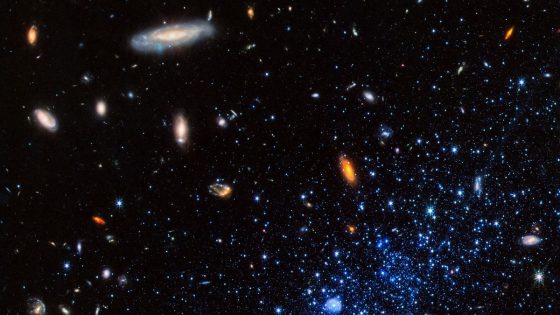A stunning discovery in the cosmos has emerged, as astronomers reveal the Leo P dwarf galaxy is forming new stars. This surprising revelation was shared on January 16, 2025, and has captivated the scientific community. What makes Leo P so unique? It’s a pristine galaxy located 5.3 million light-years away in the constellation Leo, offering a glimpse into the universe’s early history.
- Leo P is a dwarf galaxy 5.3 million light-years away.
- It contains mostly hydrogen and helium elements.
- New star formation detected in Leo P unexpectedly.
- JWST revealed insights into early cosmic history.
- Leo P reignited star formation after billions of years.
- Astronomers will study more isolated dwarf galaxies.
Why the Leo P Galaxy is Captivating Astronomers Across the USA
Have you ever wondered how galaxies evolve over billions of years? The Leo P dwarf galaxy is a key to understanding this cosmic journey. Its unexpected star formation challenges previous beliefs and opens new avenues for research, making it a hot topic in the astronomical community.
Unraveling the Mysteries of the Leo P Dwarf Galaxy
Leo P offers a rare look at a galaxy that has remained largely unchanged for billions of years. While most galaxies evolve through collisions and mergers, Leo P has stayed isolated from larger cosmic influences. This makes it a living fossil of the universe’s early days.
- Located 5.3 million light-years away in the constellation Leo.
- Thought to have stopped forming stars after the Epoch of Reionization.
- New data from the James Webb Space Telescope shows unexpected star formation.
- Researchers plan to study other isolated galaxies for further insights.
How James Webb Telescope is Revolutionizing Our Understanding of Galaxies
The James Webb Space Telescope (JWST) has opened a new chapter in astronomical research. By using its Near Infrared Camera, scientists can analyze the brightness and colors of stars in Leo P. This technology enables them to gather data that was previously out of reach.
What Makes Leo P Unique Compared to Other Galaxies?
Unlike other dwarf galaxies that ceased star formation, Leo P has reignited its stellar activity. This raises intriguing questions: What conditions allowed Leo P to start forming stars again? Researchers are eager to find out, as it could reshape our understanding of galaxy evolution.
In conclusion, the Leo P dwarf galaxy is more than just a distant speck in the universe. It’s a portal to understanding the early cosmos and the processes that govern galaxy formation. As scientists continue their exploration, we can look forward to more astonishing discoveries.





























